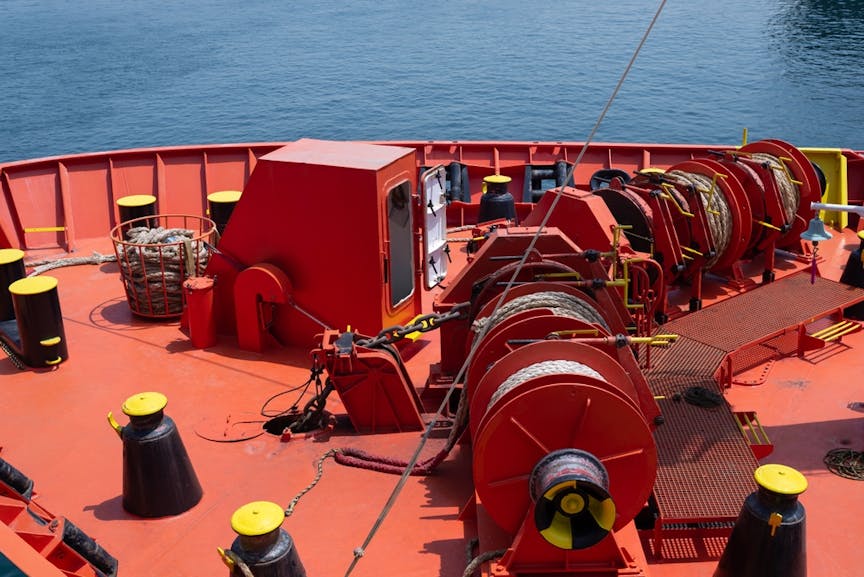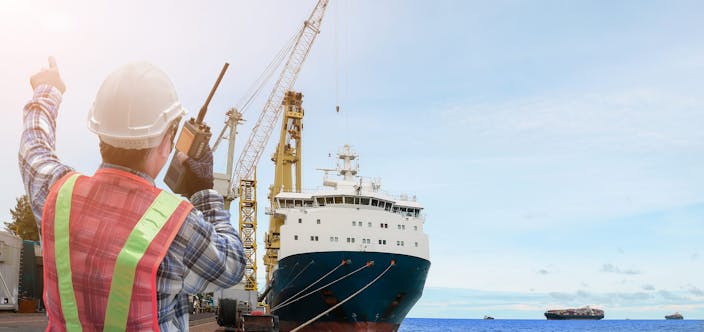Snap-back risk
Safe mooring- with focus on snap-back incidents and communication.

There are a multiple variables that have an important role in safe mooring. Many of these variables are depending on the crew and how they handle the equipment. The injuries from a suddenly parting mooring line – a snap-back accident – can be very severe. Besides to have knowledge and good safety routines, it is also important to have good communications skills during mooring operations.
Cause
- Using old and damaged mooring lines
- The storage of the mooring lines is not done properly; the lines must be protected as far as possible from the sea and the sun.
- The maintenance, inspection and testing of the mooring equipment is not done regularly and properly.
- Untrained mooring crew.
- Lack of communication. The plan and instructions are not communicated and/or understood correctly.
- Inadequate manning of mooring stations.
- Underestimating the fact that the whole mooring deck is a dangerous working place and a possible snap-back zone.
Accident
A mooring line under tension stores lots of energy and if the line breaks the sudden release of energy will cause the line travel with deadly force and usually unpredictable path. The injuries from a suddenly parting mooring line – a snap-back accident – can be very severe:
- Death
- Broken bones
- Amputation
- Muscle injuries
- Damage to the inner organs
- Head and brain injuries
- Spinal cord injuries and paralysis
Prevention
- Carry out regular checks on the mooring lines and the mooring equipment and machinery.
- Train the mooring crew properly for the vessel specific mooring routines.
- Practise your communication skills – stick to the Closed Loop Communication.
- Constant visual monitoring throughout the operation.
- Consider the operational conditions, such as weather, berth and bollard locations and adjust the mooring plan accordingly.
- Perform continuous risk assessments of mooring area/plan in order to identify working places with higher/reduced risk or the need for safety barriers and change of routines.
- Use the same material and capacity for mooring lines (i.e. breast, head and stern lines). The spring lines can have another capacity. Keep in mind that the energy loads are different and the line that holds most of the load is the first one to break.
- Make sure that the safe breaking load for the mooring line does not increase 55% of its Maximum Breaking Load (MBL).
IMPORTANT COMMUNICATION SKILLS DURING MOORING.
It is imperative to have a safe culture that motivate every crew member to speak up if there are any problems, so the issue can be solved quickly, and the operational safety can be re-established.
- CLOSED LOOP COMMUNICATION
Talk clearly and make sure you receive confirmation and acknowledge confirmation with the exact words.
Clear – Clear – Clear! - USE THE SAME TERMINOLOGY
Make sure everyone understands the terminology on the language that is used onboard, so that there are no misunderstandings. - BRIEFING
Make a plan and stick to it! This is especially important on vessels with regular and repetitious port calls. - SPEAK UP!
Everyone needs to know that it is important to SPEAK UP if the information is not clear or if things are not going according to the plan (Briefing). Sometimes the mooring crew might not feel comfortable to SPEAK UP if things are not going according to the plan and especially if they missed some key information or did not hear or understood what the responsible officer said. It is important to have a safety culture that motivate every crew member to speak up if there are any problems, so the issue can be solved quickly, and the operational safety can be re-established. - DEBRIEFING
It is important for deck officers and mooring crew to have regular follow ups on what to improve and if any safety matters have been detected during mooring operations. The foundation of the debriefing should also be a part of the safety culture.




